What to plant in October…
- artvs3
- Oct 1
- 3 min read
October is the start of bare-root season. With the soil still warm from summer but the air temperature cooling and rainfall increasing, conditions are perfect for root development. Many plants can be bought as bare-root specimens at this time of year. These dormant plants are cheaper and need far less attention than the ones you may have bought in pots earlier in the year.

Trees and shrubs are readily available bare-root. One of the best fruit trees for a long-term investment is a Pear tree (Pyrus communis). They are filled with blossom in spring, then the young fruits swell as the weather warms, to provide a plentiful harvest from late summer into autumn. The fruits should be harvested just before they’re ripe and brought indoors to complete the ripening process, which can take a month or more depending on the variety. This means you can enjoy your harvest gradually, savouring each sweet juicy fruit as it reaches perfection.

Pear trees are long-lived and exceptionally well-suited to the UK climate. They can live for decades, their productivity gradually improving with age. Suitable for every size of garden, large or small, pears can be grown either as free-standing trees or trained against a wall to take up barely any ground space. They make great screening trees if your property is overlooked, and compact varieties and trees grafted on a dwarfing rootstock can even be grown in a large container.

To keep it’s roots healthy, your bare-root tree will need to be planted as soon as possible, but it is good practice to stand it in a bucket of water for half an hour before planting. Choose a warm, sunny, sheltered spot with fertile, free-draining soil as your tree’s final location, as pear roots tend to rot in poor-draining soil. Ensure the site doesn’t get late frosts as these will damage the flowers and reduce your crop.

Dig a deep, wide planting hole large enough to accommodate the entire root system. Add compost to the base of the hole and fork it in, and also mix compost with the soil you removed to improve it. Hammer a stake firmly into the hole as a support for the growing tree, ensuring the top of the stake will be just below the bottom branches. Hold the tree so that the roots are well inside the hole and fill in around them with the improved soil, pressing the soil down firmly around the roots as you fill, to remove air pockets and give good soil contact with the roots. Use a tree tie with a buffer to secure the trunk to the stake without rubbing the trunk. Water it well, then mulch with compost to keep it moist but, to avoid rotting don’t pile the mulch against the base of the tree.
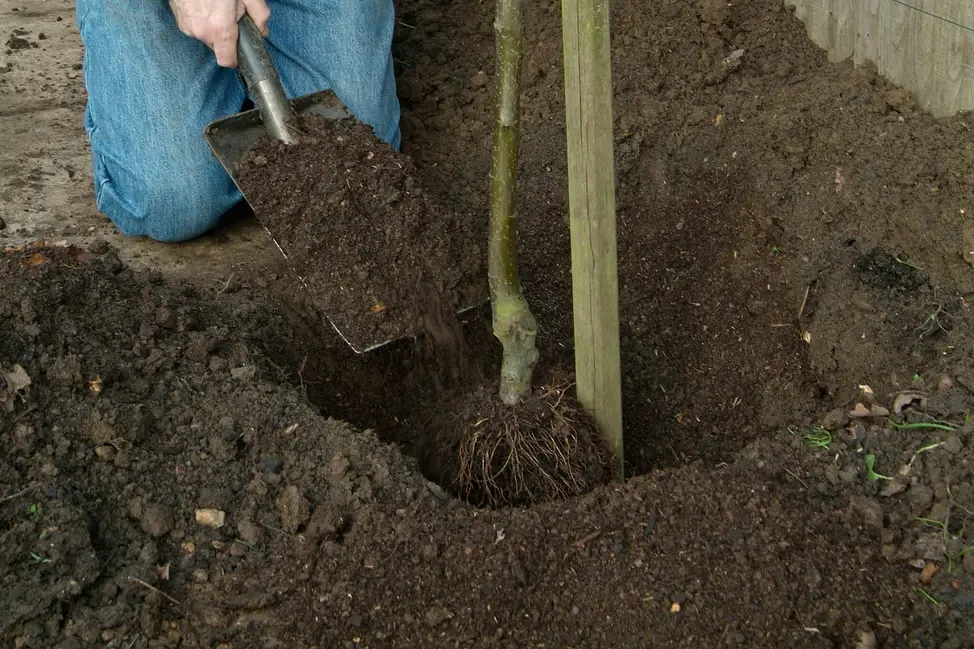
Pear trees need little maintenance once established, although it’s beneficial to prune them annually to keep them in good shape and fruiting well.
The most popular variety in the UK is Pyrus communis ‘Conference’ A dessert pear with an upright growth habit, it can grow 2.5-8m tall depending upon the rootstock. With white flowers and green fruit, it can set fruit without being pollinated. Season of use: October to November.
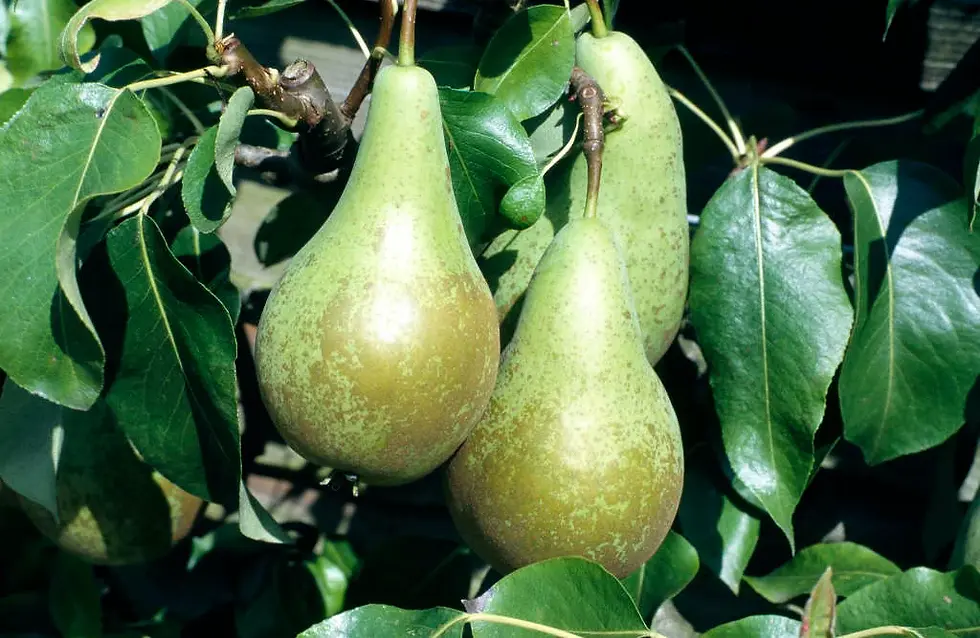
Other varieties to consider are:
Pyrus communis 'Beth’'
A compact dessert pear, 2.5-8m tall depending upon the rootstock. Flowers white, fruit yellow-green, small and sweet. Season of use: September

Pyrus communis 'Beurré Hardy
A very melting texture and fragrant with a rose-water perfume. It produces good, regular crops and is a very hardy, vigorous tree. Although it is slow to bear fruit, it has resistance to scab. Season of use November to December
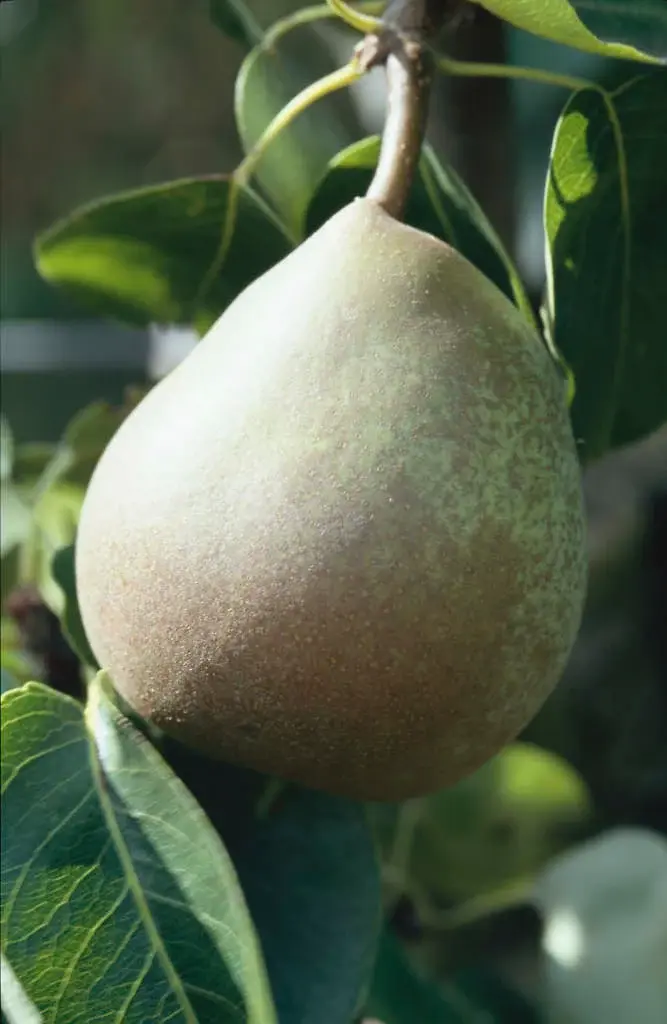
Pyrus communis 'Beurré Superfin'
A cultivar with a fine, melting, scented flesh with slightly rough, russetted, pale green and yellow skin. A high quality pear that needs a warm, sheltered site. Season of use late September and October

Pyrus communis 'Concorde'
Concorde' is a compact dessert pear, 2.5-8m tall depending upon the rootstock. Flowers white, fruit green. Season of use: October to November
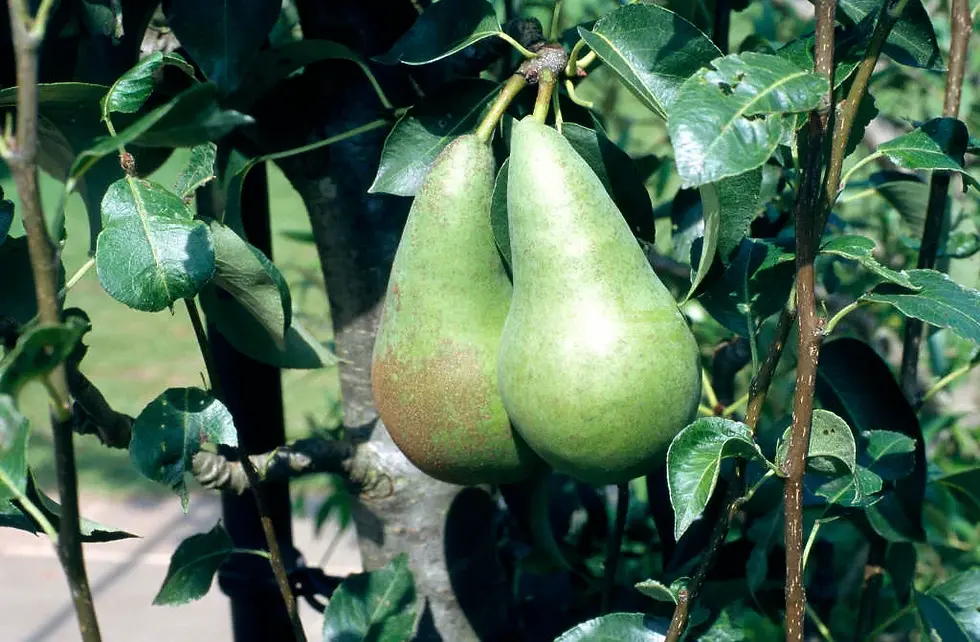
Pyrus communis 'Doyenné du Comice'
A dessert pear with a very rich flavour; very juicy, buttery, perfumed. Excellent quality, but moderate crops, although older trees crop more reliably; season of use from November to December. A vigorous tree.

Pyrus communis 'Gorham’
A medium-sized, upright tree with shiny, oval, dark green leaves and white flowers in spring. Fruit is medium-sized, conical, pale green to yellow with variable russeting and fine, cream, sweet, juicy, aromatic flesh. A reliable, self-fertile variety. Fruit ripen in early autumn and store for a month or two.

Pyrus communis 'Joséphine de Malines'
A dessert pear with a very rich, buttery and perfumed flavour. This cultivar needs a warm site. Crops are good and reliable and, though they bruise easily, fruit can be used from November through to December/January.

.png)

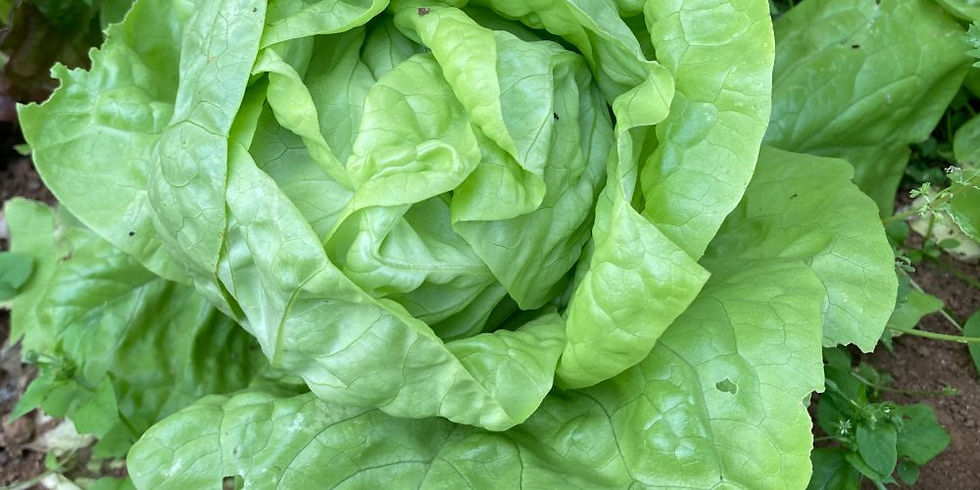
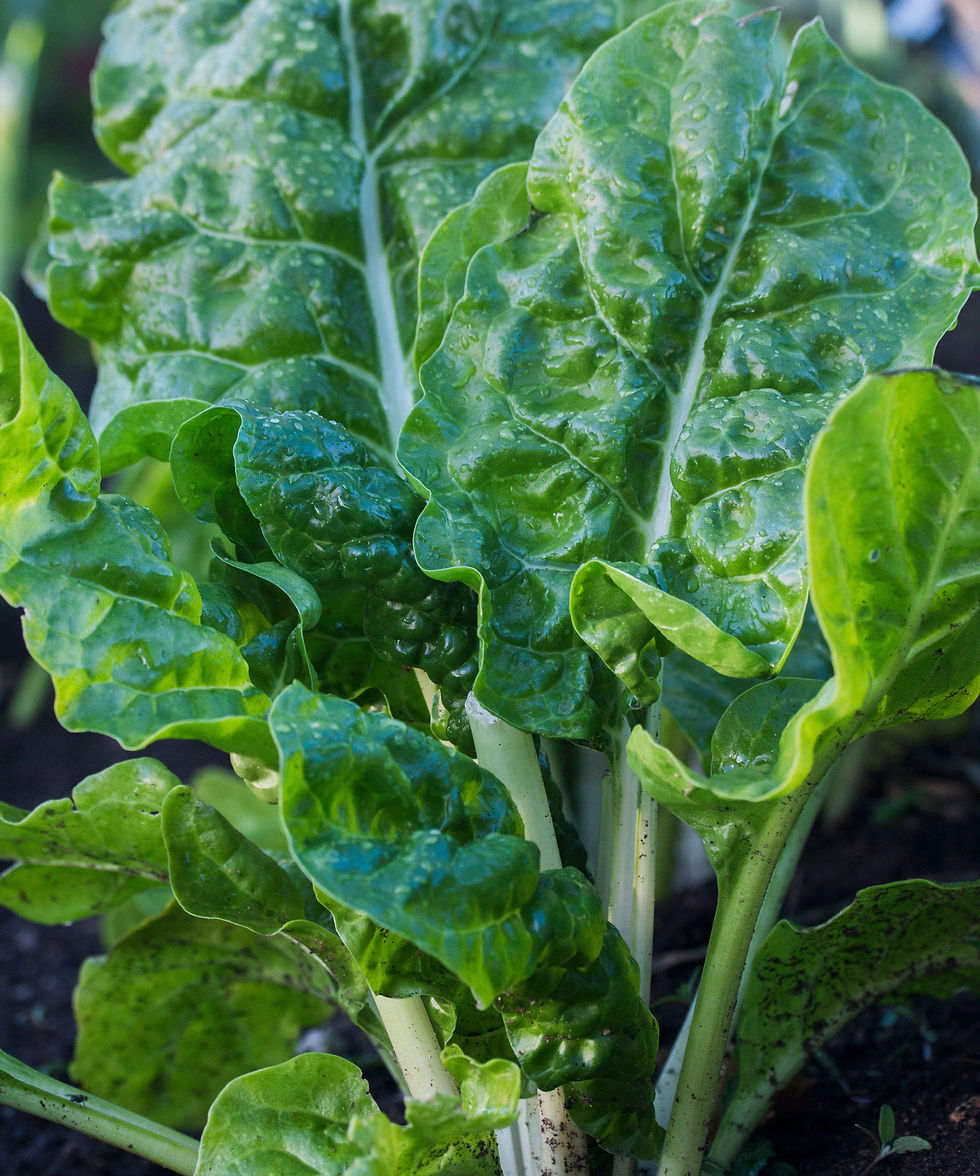
Comments